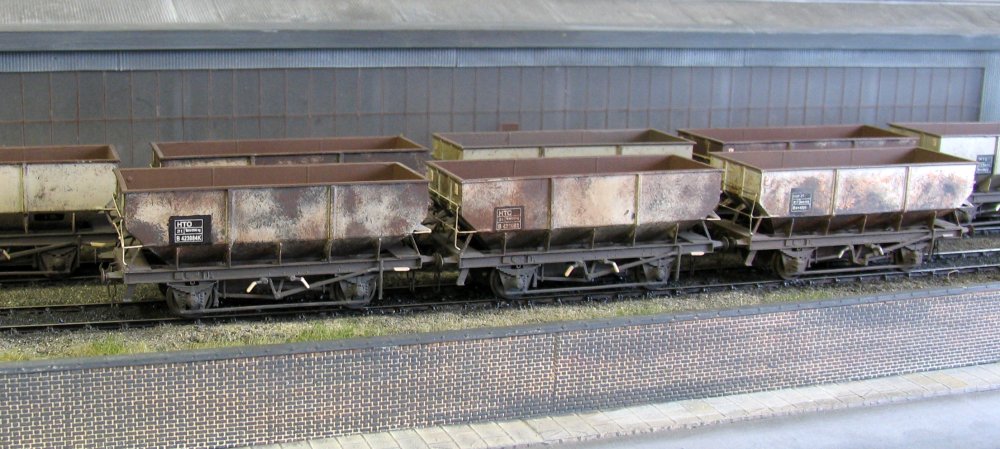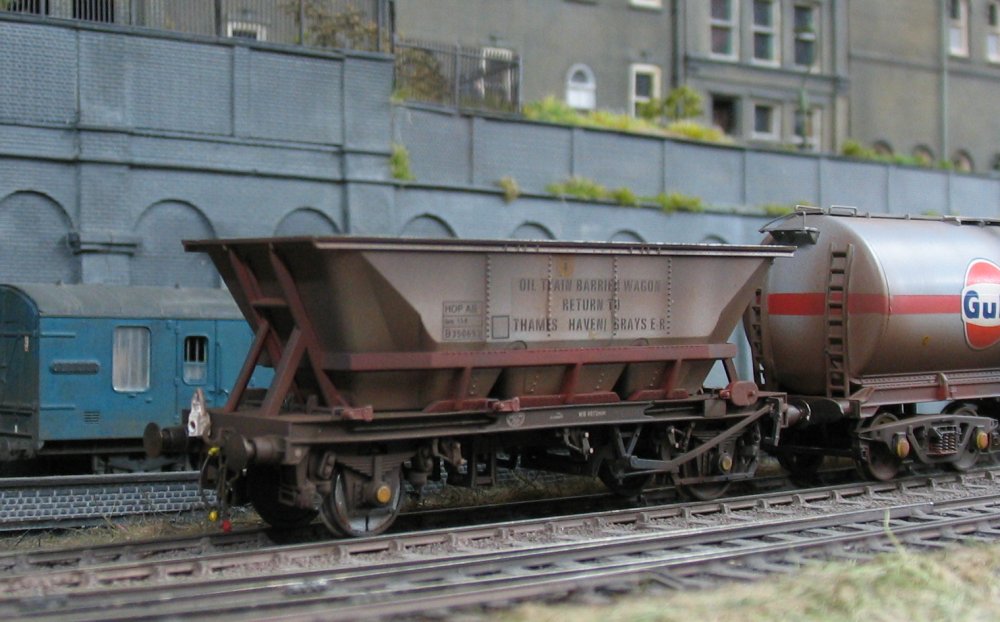

*****************************************************************************************************************************************************************
Hopper Wagons
*****************************************************************************************************************************************************************
21 ton Hopper Wagons
*****************************************************************************************************************************************************************
24.5 ton Hopper Wagons
*****************************************************************************************************************************************************************
HOP32 AB / HAA
*****************************************************************************************************************************************************************
CBA Limestone Hopper Wagons
*****************************************************************************************************************************************************************
HBA Coal Hopper
*****************************************************************************************************************************************************************
Bulk Salt Hopper Wagon
*****************************************************************************************************************************************************************
Ore Hopper Wagons
*****************************************************************************************************************************************************************



































This rake of HBA hoppers date back to my 00 gauge days with Calder Bridge, and were initially
used to trial EM gauge for a subsequent layout. After many years of just being re-wheeled and
3-link couplings fitted, they were finally upgraded to a more representative wagon.

The HBA wagons were begining to appear on BR during 1976 in all-over bauxite, and only painted
black below the solebars. These Replica based wagons have been resprayed and weathered to
represent a late 1970s rake. The coal loads use black foundry sand, with Oleo buffer shanks
picked out in silver.

This HBA model has been modified by Paul James, and backdated to produce the original type of
friction link springs instead of the later Brunninghaus type. The replacement parts came from
the leftovers of a Cambrian OBA kit. Careful removal of the moulded brake detail around the
handbrake lever proved to be the difficult part, but the re-designed Bachmann model should be
easier because of seperately fitted parts. Whilst on the work bench, the opportunity was taken
to move the end ladders to the centre line (as found on the first 200 built examples), although
this is quite tricky due to the fragile and brittle nature of them. The last of the HBA
suspensions were converted around 1983.

This heavily modified bulk salt hopper built by Paul James is based on the Lima agregate hopper
with a few detail differences. The first is the outside ribs that need to be added using plastic
L angle section. The salt hopper is a scale 2ft 2inches longer than the Lima agregate hopper and
this is most noticeable on the 18ft 2in (5537mm) wheelbase, compared to 16ft 0in (4880mm). This
is not easy to remedy as you have to change the wheelbase and the hopper length whilst keeping the
hopper detail consistent. By careful calculation of measurements and starting with a smaller middle
part it is possible to make 3 salt hoppers out of 4 agregate hoppers.

Scratchbuilt HKV iron ore and limestone hoppers at Shenston Road, built by Greg Brookes.

A pair of hopper wagons at Shenston Road, left hand is a Jedenco etched brass kit, whilst the
right hand is a scratchbuilt 13 ton hopper by Paul James.

Canada Street's Iron Ore hoppers are ready for the rust brush. These are the mixture of adapted
Ratio kits and cut-down Dapol bodies with Parkside underframes.

An ex-private owner Iron Ore hopper from 1938, as indicated by the 'P' prefix to the running number,
now weathered to a typical mid-sixties rust-spotted condition. Wagons such as these lasted into the
mid-1970s on limestone traffic around the Peak district and elsewhere.

Shown here and below are another couple of rusty ore hoppers, this time to the BR diagram 1/162.
This design was a direct carry-over from the private owner fleets built before 1948, and again
lasted into the 1970s, rivets and all.

One of very few survivors is now on display (with several other unusual BR wagons) at the NRM
Shildon out-station, still in true to life rusted condition!

During Canada Road’s appearance at the 2011 Expo EM in Bracknell, the later BR style iron ore
hopper was spotted running on the Mostyn layout. When it turned out it was now available as a
kit from 51L the chance of a new wagon type for the layout was impossible to resist. In this
view the model of the diagram 1/163 wagon begins to take shape using a combination of resin,
whitemetal, and brass parts. It will be finished in a late 1960s appearance, to run with other
ore wagons of the earlier riveted design.

Shown under construction is the 51L kit of the BR Dia 1/163 ore hopper, which is now ready for
painting. The kit has a resin casting for the main body tub, with detailing parts in a mix of
whitemetal and etched brass. Although requiring care to assemble, the finished underframe is
superbly detailed. I have chosen to substitute plastic plate-front axleboxes to match my selected
prototype, and have also added worksplates and routecard holders in the same material. The slanted
support stanchions at each end appear too narrow as supplied, so these have been re-made in plastic
to match photographs. An example of the vacuum fitted version of this design survives at the Ribble
Railway in Preston.

The BR Dia 1/163 ore hopper from the 51L kit has now gained its basic livery and is ready for
weathering. The markings are a mix taken from transfer sheets by Fox, Modelmasters, and MTK, the
latter being over 30 years old!